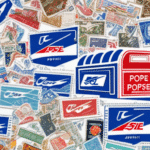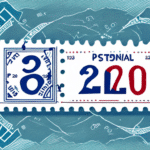USPS Postage Rates for 2023: What You Need to Know
The United States Postal Service (USPS) remains a reliable and affordable method for sending mail, packages, and parcels both domestically and internationally. As we move through 2023, significant updates to USPS postage rates have been implemented. This article provides a comprehensive overview of USPS postage rates for 2023, including how rates are determined, historical trends, comparisons with other carriers, and practical tips for saving on postage costs. Let’s explore the details!
How USPS Sets Postage Rates
USPS postage rates are influenced by various factors, including the chosen shipping service, package weight and dimensions, and the distance the package must travel. The Postal Regulatory Commission (PRC) reviews and approves any rate changes proposed by USPS, ensuring transparency and fairness in the process.
Key Factors Influencing Rates
- Shipping Service: Options range from First-Class Mail to Priority Mail and Priority Mail Express, each offering different delivery speeds and features.
- Package Weight and Size: Heavier and larger packages generally incur higher postage costs.
- Distance: The delivery zone, determined by the origin and destination locations, affects the rate.
- Type of Mail: Services such as bulk mail or non-profit mail may qualify for discounted rates.
Economic and Operational Considerations
USPS regularly reviews its pricing strategies through market research to maintain competitiveness in the shipping industry. Technological advancements like automation and route optimization also play a role in managing costs and setting rates.
The Impact of Inflation on USPS Postage Rates
Inflation significantly impacts USPS postage rates by increasing the costs of materials, labor, and transportation. In response to rising operational expenses, USPS adjusts its postage rates annually to align with the Consumer Price Index (CPI). Recent economic challenges, including the decline in traditional mail volumes due to digital communication and the surge in package volumes from e-commerce, have necessitated more frequent rate adjustments.
Financial Obligations
A critical factor is USPS's obligation to pre-fund retiree health benefits mandated by the Postal Accountability and Enhancement Act of 2006. This requirement has placed a substantial financial burden on USPS, contributing to the necessity of increasing postage rates to sustain operations.
Historical USPS Postage Rate Trends
Over the past decade, USPS postage rates have experienced consistent increases. For example, the cost of a First-Class Mail stamp rose from $0.44 in January 2010 to $0.66 in 2023, marking an approximate 50% increase over thirteen years. Priority Mail rates have also increased, reflecting rises in labor and transportation costs driven by inflation and the expansion of e-commerce.
These rate increases have been essential in addressing USPS’s financial challenges, including declining revenue from first-class mail and the costs associated with maintaining an extensive delivery network.
New USPS Postage Rates for 2023
Effective January 1, 2023, USPS implemented an average postage rate increase of 5.5% across all shipping services, including Priority Mail, First-Class Mail, and International Mail. Specific rate adjustments vary based on service type, package weight, and dimensions. Notably, USPS updated its dimensional weight pricing for Priority Mail, impacting packages exceeding one cubic foot.
Revenue and Investments
The rate increases are projected to generate an additional $2.8 billion in revenue for USPS in 2023, helping to offset rising operational costs. In response, USPS is investing in new technologies and equipment aimed at enhancing service efficiency.
Business Discounts
Businesses can benefit from discounts offered through USPS's online shipping tools, such as Click-N-Ship and PC Postage, which streamline label printing and package tracking, thereby reducing overall shipping expenses.
Comparing USPS Postage Rates to Other Shipping Carriers
While USPS is often competitively priced, the cost-effectiveness of shipping depends on various factors, including package size, weight, and destination. For instance, USPS might be more economical for small, lightweight packages sent over short distances, whereas carriers like FedEx or UPS may offer better rates for larger, heavier shipments or long-distance deliveries.
Service Options
Comparing services reveals that USPS provides a range of options, from flat-rate shipping for predictable costs to regional rate boxes offering discounts for specific shipping regions. However, USPS may not always match the delivery speeds of private carriers, especially for expedited or same-day services. Therefore, it’s essential to evaluate both cost and delivery requirements when selecting a shipping carrier.
Understanding USPS Postage Zones
USPS divides the United States into various postage zones based on the distance between the sender’s location and the recipient’s address. The number of zones and their geographic boundaries influence the postage cost for each shipment.
Determining Zones
To determine the appropriate postage, customers can refer to the USPS Postage Zone Chart, which helps identify the zone based on the origin and destination ZIP codes. Understanding these zones allows customers to better predict and manage shipping costs.
Additional Factors
It’s important to note that factors such as package weight and size also impact postage rates within each zone. Optimizing these elements can lead to significant savings on shipping expenses.
Tips for Saving Money on USPS Postage Costs
Optimizing your shipping strategy can lead to substantial savings on USPS postage costs. Here are some effective strategies:
- Utilize Flat-Rate Options: USPS offers flat-rate boxes and envelopes where you pay a fixed rate regardless of the package weight (within limits).
- Leverage Online Discounts: Purchasing and printing shipping labels online through services like Click-N-Ship can provide discounts compared to retail pricing.
- Use Priority Mail Regional Rate Boxes: These boxes offer discounted rates for packages shipped within specific regions, beneficial for businesses with localized shipping.
- Optimize Packaging: Properly sizing your packages to avoid overweight or oversized fees can reduce costs.
- Schedule Shipments During Off-Peak Times: Shipping during less busy periods can sometimes result in lower rates.
Calculating USPS Postage Rates for Your Packages
To accurately calculate USPS postage rates, you need to consider the package’s weight, dimensions, destination zone, and the chosen shipping service. USPS provides a Postage Calculator tool on their website, allowing users to input these details and receive an estimated postage cost.
Selecting the Right Service
When selecting a shipping service, remember that options like Priority Mail Express offer faster delivery but at higher costs, whereas Media Mail provides a cost-effective solution for shipping educational and media materials, albeit with longer delivery times.
Packaging Considerations
For irregularly shaped or oversized packages, USPS’s dimensional pricing may apply, affecting the overall postage cost. Utilizing flat-rate options when applicable can simplify the calculation process and potentially offer savings.
Common Mistakes to Avoid When Using USPS Shipping Services
Avoiding common pitfalls can ensure a smoother and more cost-effective shipping experience with USPS:
- Incorrect Weight and Measurement: Always accurately weigh and measure your packages to avoid unexpected fees and delivery delays.
- Incomplete or Illegible Addresses: Ensure that all address information is complete and clearly legible to prevent misdelivery or return of packages.
- Ignoring Shipping Restrictions: Familiarize yourself with USPS’s restricted and prohibited items to avoid shipping prohibited goods.
- Poor Packaging: Use appropriate packaging materials to protect your items, reducing the risk of damage and additional handling fees.
The Future of Postal Service: Implications for USPS Postage Rates
The USPS faces ongoing financial and operational challenges that may influence future postage rates. Innovations in e-commerce and increased demand for package delivery present both opportunities and pressures for USPS to adapt its services and pricing strategies.
Opportunities for Growth
Potential areas of growth include same-day delivery, integration of advanced logistics technologies, and expansion of international shipping services. These initiatives could enhance USPS’s competitive edge in the evolving shipping landscape.
Financial Sustainability
However, financial sustainability remains a critical concern, influenced by legislative obligations and competitive pressures from private carriers. Any strategic shifts by USPS to enhance efficiency and expand service offerings could impact future postage rates, either stabilizing them or necessitating further adjustments in response to market dynamics.
The Importance of Accurate Addressing in Lowering USPS Postage Costs
Accurate and standardized addressing is crucial for both ensuring timely delivery and minimizing postage costs. USPS incentivizes businesses to adopt precise addressing practices by offering discounts for using tools that generate accurate address labels, such as ZIP+4 codes and apartment or suite numbers.
Reducing Delivery Issues
Proper addressing reduces the likelihood of returned or undelivered packages, which can incur additional fees and disrupt shipping workflows.
Address Verification Tools
Investing in address verification services or using USPS’s own addressing tools can lead to significant savings and improved delivery success rates.
In conclusion, understanding how USPS sets postage rates, staying informed about rate changes, and implementing strategic shipping practices can help you manage and reduce your postage expenses effectively.






















